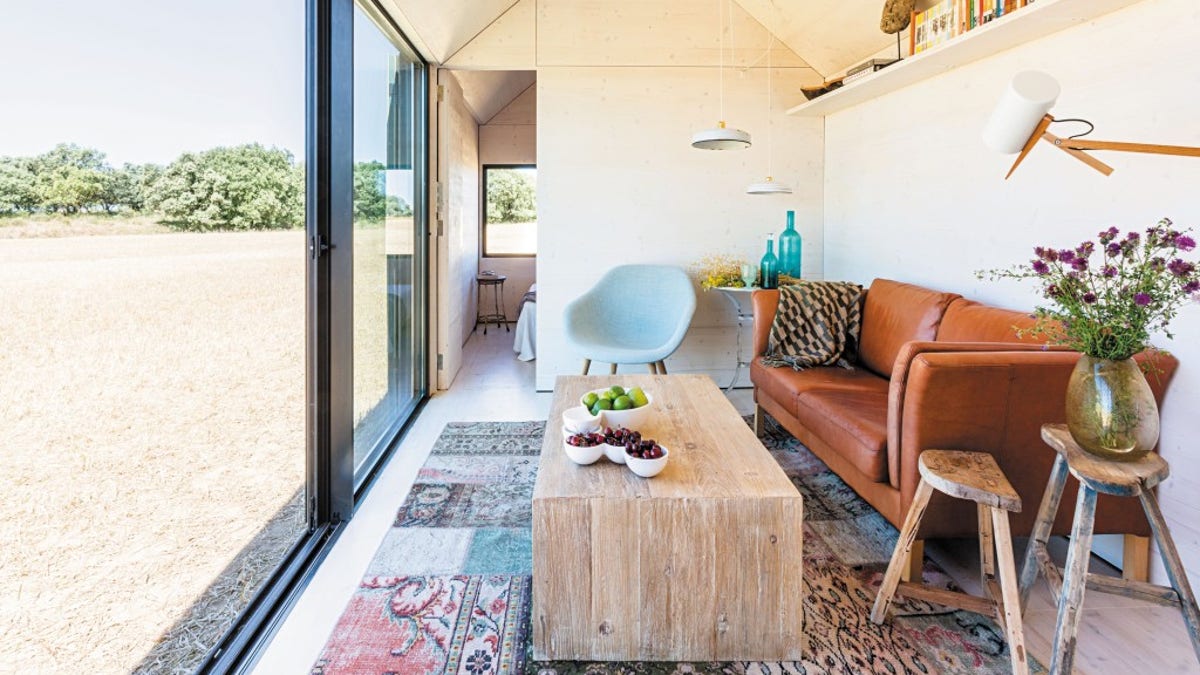
Portable Home PH80, interior. From 150 Best Mini Interior Ideas by Francesc Zamora Mola. Architect baton Arquitectura.
It's spring, so it's also spring cleaning season, and Step 1 is getting rid of all the unnecessary stuff that accumulates in your home. How does it manage to pile up? Didn't you just do this last year??!! Maybe you should just throw it all away -- for good.
In fact, that's what a lot of people are doing now (OK, maybe not all of it). You've probably heard about the trend toward living with less -- fewer possessions, less space -- whether it's zero-waste living or the tiny house movement.
There are two factors driving people toward small homes today: the economy and the environment, observes Francesc Zamora, author of " 150 Best Mini Interior Ideas." The coffee-table book, published in February, profiles small homes around the world.
"They are generally more affordable, and for home buyers that means smaller mortgages. They are cheaper to maintain as well," Zamora said in an interview. In addition, he said, "building and maintaining large houses has an impact on the environment. A large house takes more building resources and requires more maintenance than a smaller house. People are willing to go smaller to simplify their lives."
Zamora said he was inspired by the creative storage solutions that he discovered while researching the book.
"I'm constantly looking for interesting storage solutions," he said. "I think finding ways to store things is the biggest challenge people deal with, especially city dwellers. The book is chock-full of ideas, but the tricky part is choosing the one that works best for your home, that conforms to your style and to your needs."
If you're squeezed into tight quarters or looking to downsize, here are some of Zamora's top tips.
1. Prefer an open plan
When space is limited, you don't want to carve it up. An open view with clean lines makes a space seem larger.
2. Make the most of natural light
Abundant natural light makes your home feel larger, so capture as much of it as you can. Don't have floor-to-ceiling windows? "Mirrors expand and reflect light," Zamora writes. "You can transform a small room into a larger and brighter space by using illusion wisely."
3. Use a minimalist color palette
You want to avoid excess in a small space -- too much stuff, too many frills, too many colors. Stick to one or two similar shades, max, preferably paler ones that help maintain a light feel.
4. Built-in furniture is key
"Built-in furniture is perhaps the most efficient furnishing solution for spaces of limited dimensions: it frees up valuable floor area, makes the space less cramped and unifies the dcor," Zamora says.
5. Make your furniture work double duty
In a small space, everything has to earn its keep. "Furniture can be an effective room divider," Zamora says. "It is an excellent solution for studio apartments where different functions share the same space."
6. Obsess over your storage
"Think about how you are going to use your cabinets so you can choose the right type of hardware," Zamora says. "Look into different door hinges and drawer hardware." Custom doesn't have to be pricey, either. "Design your own modular system with crates of different sizes to bring an industrial touch to your home."
As Zamora's book shows, living in a small space doesn't have to feel cramped and inconvenient. A thoughtful approach to simplifying your lifestyle can make a big difference. But still, keep a watchful eye on your stuff -- it can pile up without your noticing. Seriously, how does it do that?
The post What Small Homes Can Teach You About Living With Less appeared first on Real Estate News and Advice - realtor.com.